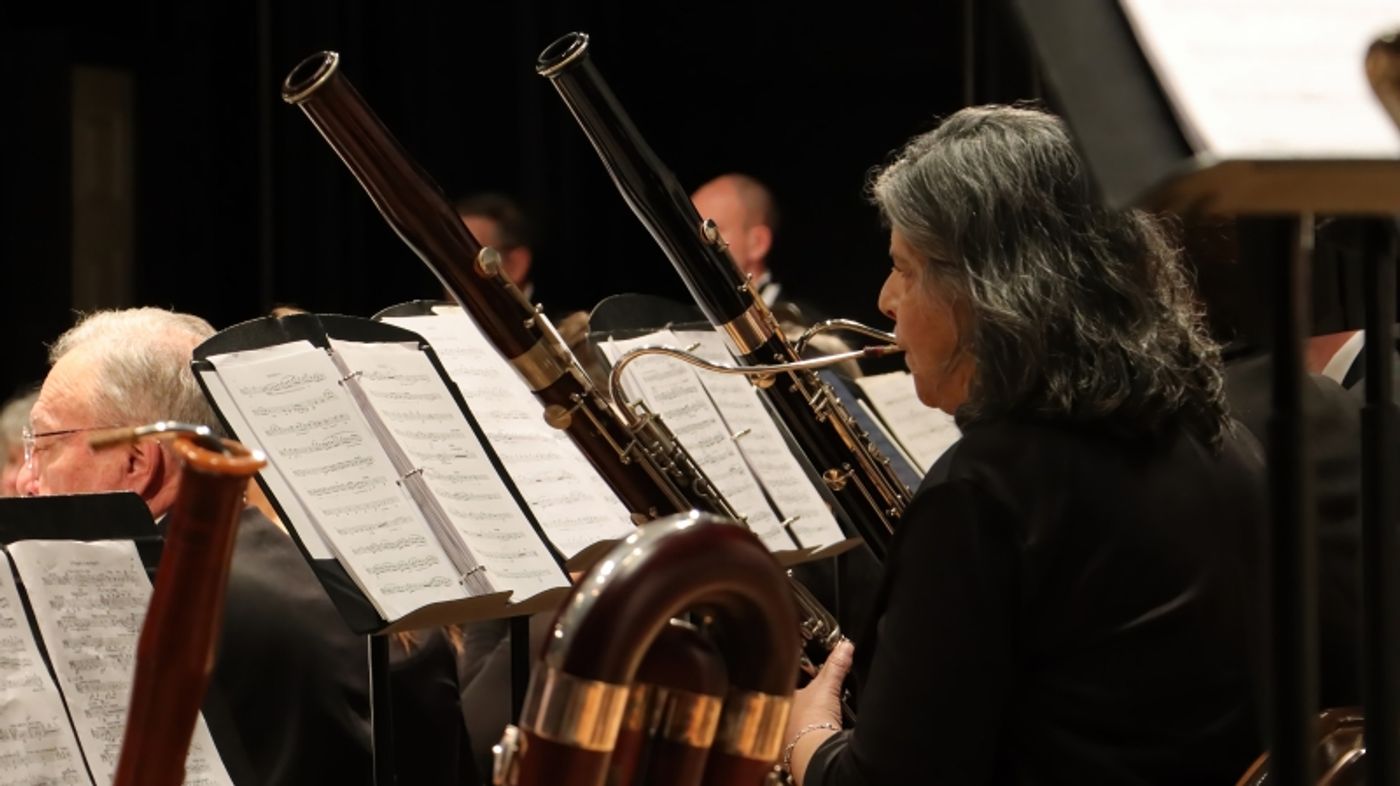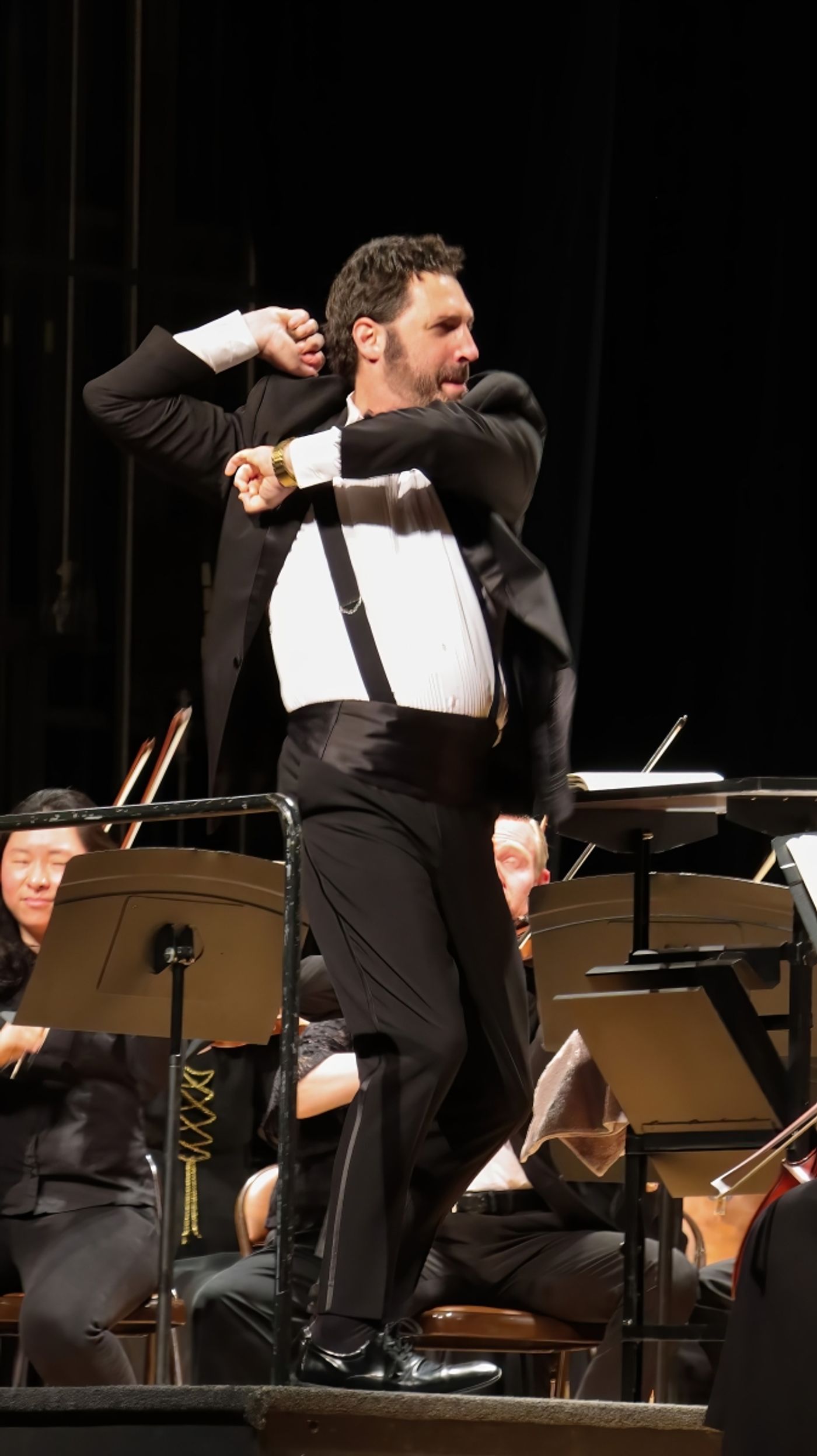Review: The Rule of Threes: The GNSO Performs Soros, Price and Mahler at Aquinas Hall, Newburgh
What did our critic think of The GNSO Performs Soros, Price and Mahler at Aquinas Hall, Newburgh

The GNSO presents “The Rule of Threes.”
Programming is a key element in the lifeblood of every symphony orchestra. Finding the right blend of old and new, of familiar and unfamiliar, of modern and traditional, of the accessible and the more challenging; this is the task. A lot of major symphony orchestras have settled into the practice of pairing new and more modern (i.e. less immediately accessible and often less tonal) with the stalwarts of the repertory. The popularity of the warhorses ensure that the new pieces get a degree of exposure. Then they often disappear onto the shelf of obscurity. Only time will tell if they will be dusted off by future generations and achieve some modicum of popularity.
 Today’s audiences tend to forget that quite a few of the standard repertory piece also got played only once when they premiered, and then never again for a long time – frequently after the composers’ death.
Today’s audiences tend to forget that quite a few of the standard repertory piece also got played only once when they premiered, and then never again for a long time – frequently after the composers’ death.
GNSO Musical Director, Russell Ger has consistently assembled thematic programs that “work”. In plain terms, programs that make sense both thematically as well as musically. The Rule of Threes concert was no exception.
“When I was a kid, I had a book that explained a trick with the number nine: the sum of the digits in any multiple of nine adds up to nine. This was like magic! And so I had a vaguely similar idea about how many things come in groups of threes. It turns out it's a lot! So, I went hunting for musical pieces around the number three.” – Russell Ger, Musical Director of the GNSO.

For this concert the Maestro combined an unlikely (but completely simpatico) program of three disparate works revolving around the number three: Enrique Soro’s “Three Chilean Songs,” Florence Price’s “Symphony No. 3,” and the final movement from Gustav Mahler’s magnificent “Symphony No. 3.”
“The Chilean songs were for a dear friend of mine, godmother to my daughter, who was born and raised in Chile. I told the orchestra during rehearsals that their playing needed a bit more spice. I said one of my close friends was Chilean and believe me, she could be spicy! (I called her to relay the story and she loved it.)” There was spice aplomb in the GNSO’s performance of the Soro pieces. The rhythmic qualities of the pieces had a visceral effect on the audience and got them leaning forward in their seats. The pieces provided a perfect appetizer for the main courses to follow.
The life story of Florence Price could be (and hopefully someday will be) a Hollywood movie. Price graduated high school, as valedictorian no less, at the ripe old age of fourteen!!! Born in rural Arkansas, she moved to Boston where she attended the New England Conservatory, where she studied piano and organ. She graduated with honors, double majoring in organ and music education in 1906. But Arkansas was too small (and not particularly supportive of black artists) so she and the family packed their bags and moved to Chicago, where she would achieve acclaim.

Florence Price became the first Black American woman to have an orchestral work performed by a major U.S. orchestra. Her 3rd Symphony, completed in 1939 was first performed in 1940 by the Detroit Civic Orchestra.
In 2022, the symphony finally got its just deserve, as the Philadelphia Orchestra's recording of Price's Symphony No. 1 in E Minor and Symphony No. 3 in C Minor, conducted by Yannick Nézet-Séguin, won a Grammy Award for best orchestral performance.
“In my Masters in Boston,” said Ger, “I read about Dvorak telling his composition class in New York that as American symphonists they must look to the native musics of their country (that is, Jazz, the Blues, Spirituals etc.) I had never heard a composer really achieve that until I began preparing the wonderful Symphony No. 3 by Florence Price, which does exactly what Dvorak exhorted.”
The piece displays a kaleidoscope of influences from Dvorak to Wagner to traditional spirituals – but never through appropriation, rather through suggestion and snatches of familiar phrases that punctuate the piece. Ger brought forth an enormous amount of piquancy and color, highlighting the interior orchestration that gives the work its special zestiness. Particular kudos to the brass section in the Andante second movement, where they delivered soulful phrases in an old school spiritual style, which then repeated and was developed gently and lovingly by the woodwinds and strings. This take on the piece made a strong case for future performances of both this and other Price works.

After a brief intermission, the concert continued with a shattering performance of the final movement of Mahler’s gargantuan 3rd Symphony.
“Mahler is the composer closest to my heart. At the end of the concert, as the last note rang in the hall and the applause began, I said quietly to myself, 'Thank you, Gustav.' And as I said it, a wave of emotion welled up and I involuntarily wept. But I had to turn to the audience and smile and bow, so I quickly shook it off. But it was an incredibly powerful experience. And when I looked around, many of my musicians and even people in the audience also had tears. So, there was something unusually special in the room that night.”
The sixth and final movement of the 3rd symphony is an “Adagio” lasting around 25 minutes. However unlike the closing movements of so many other symphonies which conclude with adagios (Tchaikovsky’s 6th or Mahler’s own Ninth) these is no tragedy or pathos in the 3rd, rather it is a gloriously noble air which belies the adagio notation.
Right from the start, Maestro Ger brought forth the Beethoven-esque quality of the movement’s opening melody – suggesting a brighter version of the adagio movement of Beethoven’s last quartet, Op. 135. The movement, taken on its own, has the length of one of the shorter Mozart symphonies, but that is the only similarity. The music thrusts forward, then pulls back, time and time again giving the impression it would explode….then contracting quietly, rebuilding each time until reaching its final statement.
The Adagio’s original title, What Love Tells Me, and the composer’s notes in the manuscript: “Behold my wounds! Let that one soul be lost!” give the conductor all the information required, and Maestro Ger marshalled all the collective forces of his troops into a magnificent thundering final climax that shook the rafters of the hall.
Kudos to Maestro Ger and his wonderful GNSO for another superb concert, in a season of superb concerts.
All Photos: Mark Westin
Peter Danish
Reader Reviews
Videos

